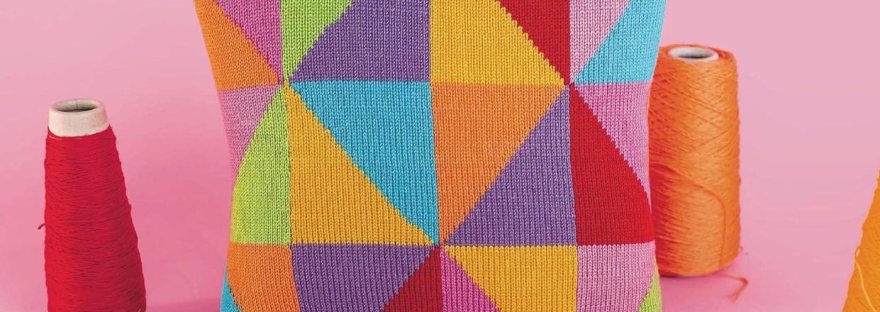I love my vintage machine knitting book collection, but new machine knitting books just make my day. They’re proof that machine knitting isn’t dying — it’s still evolving, and dare I say, growing.
Discovering Machine Knitting by Kandy Diamond releases in North America on October 10, 2023.
It’s more than just an eye-catching cover. Here are my thoughts:

Perfect for beginners, it starts with how the machine works and how stitches are formed, all the way through to shaping garment panels to your desired size and fit. Each chapter focuses on different skills that build throughout the book, with lots of projects so you can put the skills into practice and make some knits for yourself.
If you work through the step-by-step instructions and projects in this book, by the end of it you will be designing and knitting your own garments!
Excerpts from the publisher’s blurb
The Details
| Published: 2023 | Publisher: The Crowood Press |
| Format: Paperback | Pages: 160 |
| MSRP: $24.00 | Canada: $32.99 |
Chapters
| Chapter 1: Before You Start | Chapter 2: Getting Started |
| Chapter 3: Pattern and Garment Construction | Chapter 4: Simple Shaping |
| Chapter 5: Colour and Design | Chapter 6: Level Up – Ribber |
| Chapter 7: Design Your Own |
What I’m Looking For
If you missed my last book review on Alison Dupernex’s Creative Machine Knitting, here’s the rundown on what I look for in a machine knitting book.
Schematics are the first thing I look for in a knitting book of any kind. Schematics make it possible to change yarns and still have a correctly sized finished garment. For plus-size knitters like myself, they make it much easier to adjust sizing. It’s non-negotiable for me– a “good” book requires schematics.
I want to see what makes up the designer’s perspective. What makes them unique? How do they work with the classics? What do they bring to the crafting community, and what do they think of that community?
If a book touts itself as a skill book, I want to see pictures and detailed how-to’s throughout. Machine knitting can become intuitive, but setup often includes multiple steps that are easy to miss if someone becomes overwhelmed during the learning process.
Overview
Discovering Machine Knitting by Kandy Diamond is a start from scratch course based on using a standard gauge (4.5mm) domestic knitting machine, but that doesn’t mean users with other gauge machines won’t find it useful. Basic skills translate between machines, and while mid-gauge users (6.5-7mm) will need to learn to hand select needles for colorwork, the skill-building projects are still worthwhile.
Diamond begins the book teaching readers about the knitting machine itself–parts and accessories; stitch formation; fiber considerations; basic cleaning, maintenance, and troubleshooting.
Chapters each teach a different set of skills and are further divided into sections with detailed written instructions accompanied by step-by-step photos and colorful diagrams. Example pictures use bright and easy to see colors with contrasting colors illustrating notable instances in the knitting process.
Designer profiles throughout the book introduce readers to artists across the industry, offering more perspectives to beginners along with showing the possibilities of what they, too, can do after they have completed the book’s course.
Thoughts
I greatly appreciate those with decades long machine knitting careers who have shared their work with us, but I often feel a generational disconnect because, well, we are from different generations, and sometimes machine knitting patterns and the craft itself just feel… old. I want my peers to look at my work and not think I’m just doing granny things.
Discovering Machine Knitting makes machine knitting look approachable, fun, and current. The book echoes the bright and fun vibe that Kandy Diamond curates on her Instagram account through her brand Knit and Destroy, and the beginner-appropriate projects feel updated and wearable.
The book is instructional without feeling sterile. The designer profiles and Diamond’s own designs offer inspiration and remind the reader that this is only the beginning. This combined with the well thought out photos and use of color to illustrate separation in steps keeps the book engaging and the messaging clear. There is so much attention to detail in this book, and I feel Diamond’s enthusiasm through the pages
Diamond walks you through the knitting design process from yarn selection and swatch to finishing and makes the math involved feel like just another step in the knitting process as opposed to the “intimidating barrier” many students I’ve encountered consider it. The book is worth a buy for the design math alone.
There aren’t a ton of projects in this book, but each is customizable, skill-building, and wearable, so I think you’ll find yourself making them more than once.
I made an autumn-themed version of Diamond’s Sweet and Simple Block Jumper using Brown Sheep Company’s NatureSpun Sport 100% wool.
This is a great project that will help beginners get a good feel for the machine and gain confidence in their design abilities. More on this yarn and project in a future post.
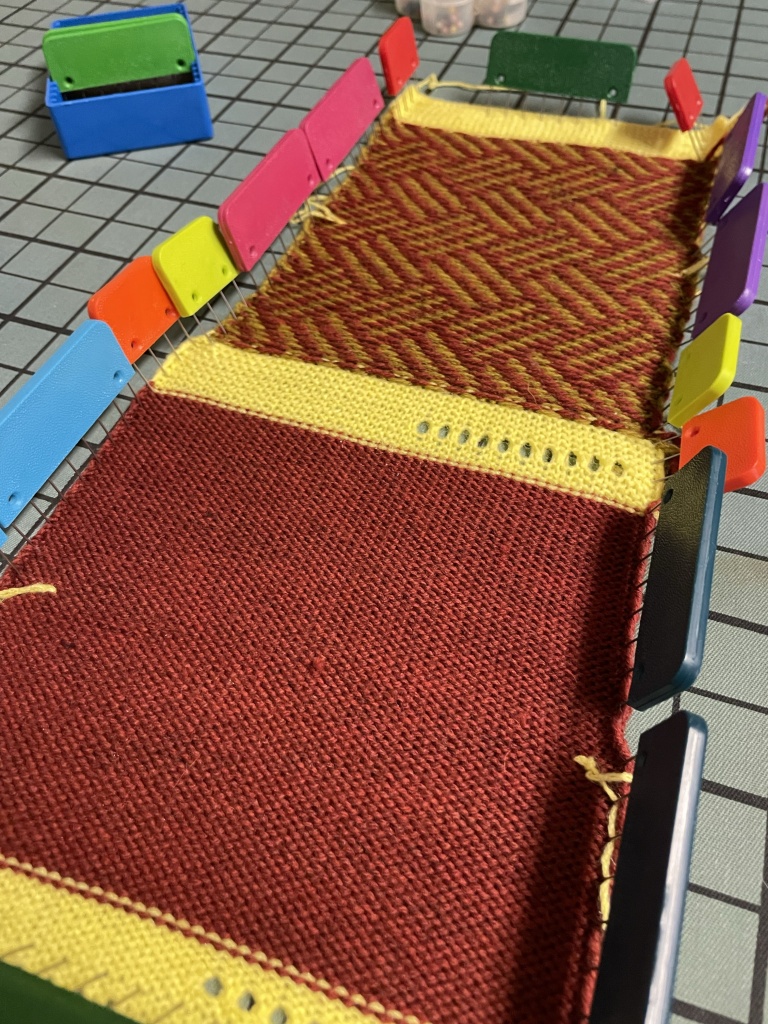

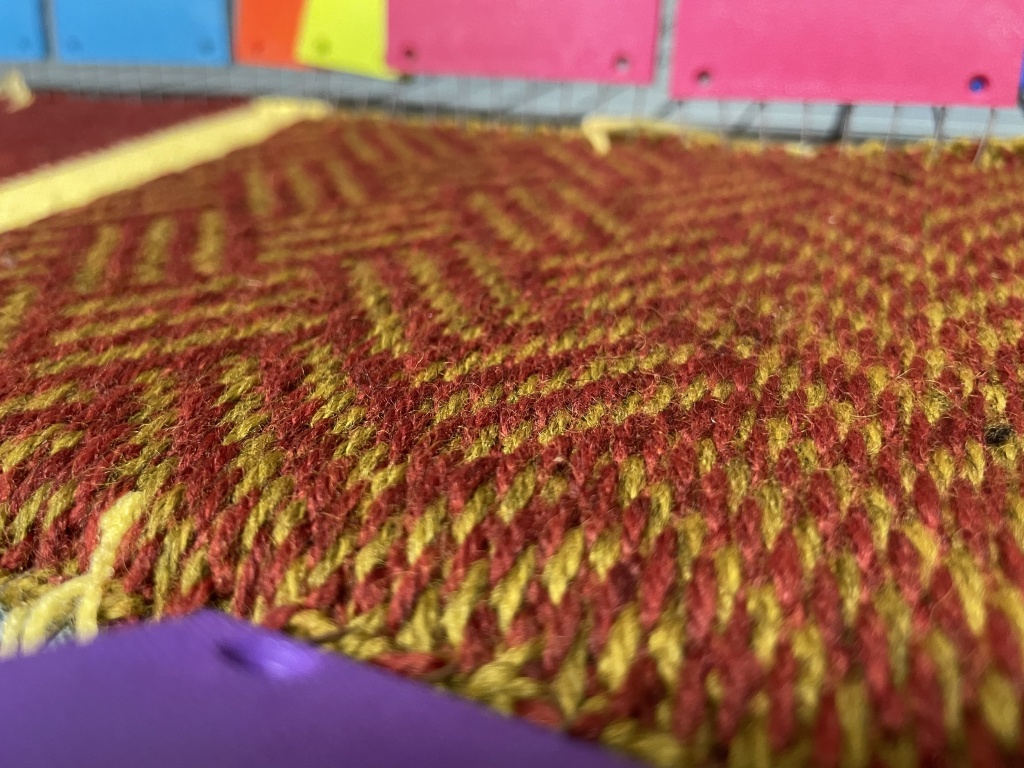
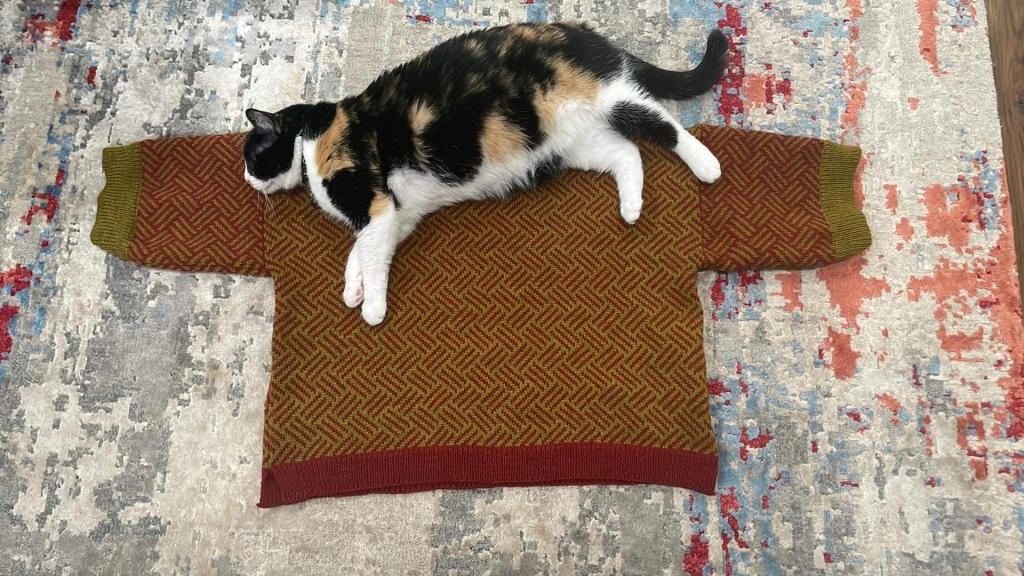
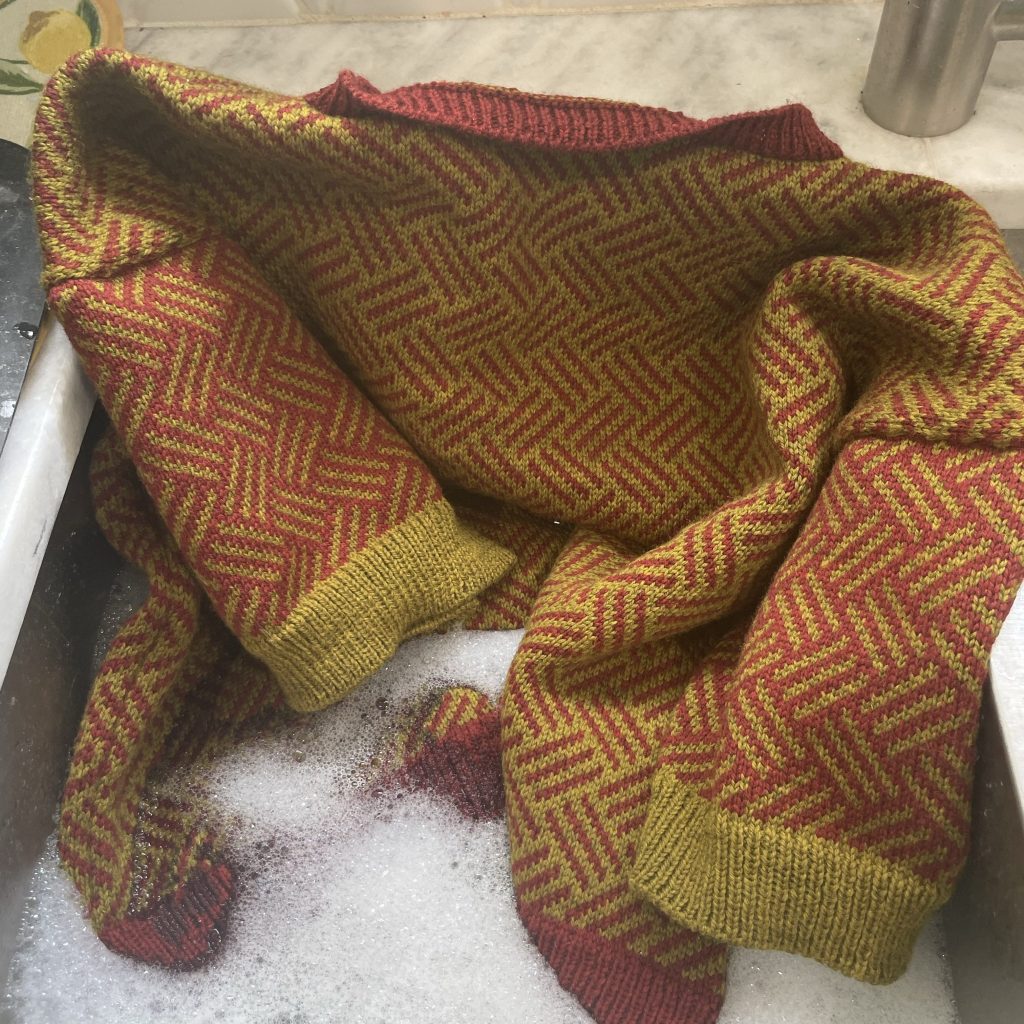
Schematics? Where appropriate
Perspective? Explorative and focused on contemporary design
How To’s? Detailed and well thought out
This book makes me excited. After reading my copy from Blackwell’s UK, I asked the shop owner where I teach to order a few copies for the North American release so I could recommend it to my students. One of my students even mentioned its upcoming release to me at a lesson to make sure I knew of it!
If you’re a beginner or someone who needs a skill refresh after years away, this book is for you. If you’re not a beginner but you want to learn more about machine knitting designers of today and support their work, this book is for you. If you’re just looking for project inspiration, this book is for you.
Where to Buy
If you don’t have a local yarn shop or bookstore who can order this for you, please consider using my Amazon affiliate link when you purchase your copy of Kandy Diamond’s Discovering Machine Knitting. I may earn a small commission at no cost to you that helps me continue providing free content.
Discovering Machine Knitting releases in the United States on October 10, 2023.

Thanks for joining me on my machine knitting journey! If you have an idea for a yarn, book, or product for me to review, please let me know through my contact page.
Did I miss something? Disagree? Let me know in the comments!


